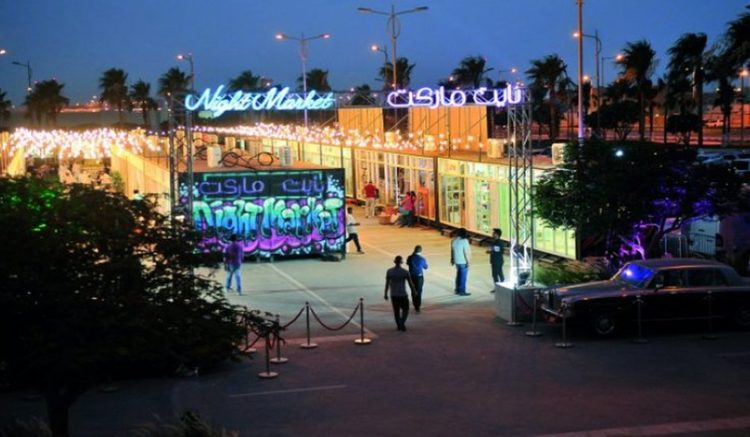
- Introduction to Raja Ampat and its Underwater World
- The Biodiversity of Marine Life in Raja Ampat
- The Best Diving Sites in Raja Ampat
- Tips for Diving in Raja Ampat
- Conservation Efforts in Raja Ampat’s Underwater World
- Beyond Diving: Other Activities to Experience in Raja Ampat
- Planning Your Trip to Raja Ampat
- Conclusion: Exploring the Wonders of Raja Ampat’s Underwater World
- FAQ
A Dive into the Spectacular Underwater World of Raja Ampat. Raja Ampat, a remote archipelago in Indonesia’s West Papua province, is a paradise for divers and marine enthusiasts alike. With its crystal-clear waters, colorful coral reefs, and an impressive variety of marine life, Raja Ampat is considered one of the best diving destinations in the world. This article dives into the spectacular underwater world of Raja Ampat, exploring its breathtaking beauty, incredible biodiversity, and the best diving sites to experience. We’ll also share tips for diving in Raja Ampat, sustainable tourism practices, and other activities to partake in beyond diving. If you’re planning a trip to Indonesia, Raja Ampat is a destination you won’t want to miss.
Introduction to Raja Ampat and its Underwater World
Raja Ampat is an archipelago located off the coast of Papua, Indonesia, comprising over 1,500 small islands. It is known for its strikingly clear waters and is home to one of the most diverse marine ecosystems in the world. This region is often referred to as the “Crown Jewel” of the Coral Triangle and is a diving paradise for avid snorkelers and scuba divers alike.
Location and Overview of Raja Ampat
Raja Ampat lies within the Coral Triangle, a region that is home to more than 75% of the world’s coral species and over 2,000 species of reef fish. The archipelago is located in the northwest of the island of Papua and covers a vast area of approximately 9.8 million acres. The area is protected by the government to preserve the delicate marine ecosystem found here.
Why Raja Ampat is a Diving Paradise
Raja Ampat is considered a diving paradise due to the incredibly diverse ecosystem. The unique combination of nutrient-rich currents, high levels of sunlight, and warm waters provide a perfect environment for an abundance of marine life, including hundreds of species of fish, turtles, sharks, rays, and vibrant coral gardens. The area is perfect for all levels of divers, from novices to professionals, with a variety of dive sites to choose from.
The Biodiversity of Marine Life in Raja Ampat
The Coral Triangle: Home to the World’s Most Diverse Marine Life
The Coral Triangle is the global center of marine biodiversity, encompassing the waters of Indonesia, the Philippines, and Papua New Guinea. Raja Ampat is located at the heart of this region and is home to over 1,300 species of fish and 600 species of coral, an astonishing 75% of the world’s coral species.
The Incredible Variety of Marine Species in Raja Ampat
The marine life in Raja Ampat is incredibly diverse and includes rare species such as the walking shark, pygmy seahorse, and wobbegong shark. The area is also known for its large numbers of manta rays, which can be spotted year-round, as well as whales and dolphins. Snorkelers can expect to see vibrant coral gardens filled with colorful fish, while deeper dives provide opportunities to observe larger marine species.
The Best Diving Sites in Raja Ampat
Kri Island: A Manta Ray Haven
Kri Island is a must-visit for manta ray enthusiasts. This dive site is home to a cleaning station where these gentle giants come to have parasites removed from their skin. The site also boasts a stunning variety of soft and hard corals, schools of fish, and reef sharks.
Fam Islands: Colorful Reefs and Caverns
The Fam Islands offer a diverse range of diving experiences. The dive sites here include spectacular wall dives, vibrant coral gardens, and underwater caverns. Snorkelers can enjoy the shallow reefs filled with colorful fish, while scuba divers can explore deeper reefs teeming with marine life.
Misool Island: A World-Class Diving Destination
Misool Island is a world-class diving destination. The dive sites here include some of the most diverse and colorful coral gardens found anywhere in the world. Highlights include schools of barracuda, giant groupers, and reef sharks, as well as the famous Boo Windows cavern dive.
Tips for Diving in Raja Ampat
When to Go and What to Expect
The best time to visit Raja Ampat for diving is from October to April when the waters are calmest. Visitors can expect warm water temperatures year-round, ranging from 27°C to 30°C. Visibility is excellent in Raja Ampat, averaging around 30 meters, and the currents can be strong, making it important to dive with an experienced guide.
Diving Safety and Best Practices
Diving in Raja Ampat can be challenging, with strong currents and varying depths. It is important to dive within your limits and to ensure that you are properly certified and equipped for the conditions. Dive operators in the area are experienced and knowledgeable and are well-equipped to provide safe and enjoyable diving experiences.
Gear and Equipment You’ll Need
Diving in Raja Ampat requires standard scuba diving gear, including a wetsuit, fins, mask, and regulator. Some dive operators may also require the use of a dive computer and a safety sausage. It is also important to use reef-safe sunscreen and to practice responsible diving to protect the delicate marine ecosystem found in the region.
Conservation Efforts in Raja Ampat’s Underwater World
Raja Ampat, a stunning archipelago in Indonesia, is known for its rich marine life and coral reefs. However, these precious underwater ecosystems face threats from climate change, pollution, and overfishing. To protect the biodiversity of Raja Ampat’s seas, various conservation initiatives are in place.
Protecting Raja Ampat’s Coral Reefs and Marine Life
One such effort is the establishment of marine protected areas (MPAs), where fishing and other activities are regulated to avoid damaging the ecosystem. Tourists are also required to pay environmental fees to help fund these conservation efforts. The local government and various organizations conduct surveys and research to monitor the health of the reefs and marine life, and measure the impact of conservation efforts.
Community-Led Conservation Initiatives
The conservation efforts in Raja Ampat are not only led by government and organizations but also by the local communities. The residents of the islands are actively engaged in conservation efforts, including creating sustainable livelihoods through eco-tourism while also preserving their cultural heritage. The community-led conservation initiatives not only protect the underwater world of Raja Ampat but also benefit the local population.
Beyond Diving: Other Activities to Experience in Raja Ampat
Apart from the spectacular underwater world, Raja Ampat offers various activities that cater to different interests and preferences.
Island Hopping and Beach Exploration
Island hopping is a popular activity in Raja Ampat, where you can explore the uninhabited islands and beaches in the archipelago. Each island has its unique charm, and you can enjoy activities such as snorkeling, swimming, and sunbathing.
Visiting Local Villages and Learning About the Culture
Local villages in Raja Ampat offer a glimpse into the traditional way of life in the archipelago. You can visit the villages, interact with the friendly locals, and learn about their culture and customs.
Kayaking, Bird Watching, and Other Adventures
Raja Ampat is also a paradise for adventure enthusiasts. You can explore the sea caves, mangrove forests, and hidden lagoons through kayaking or go bird watching to witness the unique avian life.
Planning Your Trip to Raja Ampat
Before heading to Raja Ampat, proper planning is essential to ensure a smooth and enjoyable trip.
Getting There and Getting Around
To get to Raja Ampat, you can take a flight to Sorong in West Papua and then continue your journey by boat. Local transport options include speedboats, traditional boats, and ferries.
Visa and Entry Requirements
Visitors to Indonesia require a visa, but some countries are eligible for a visa-free entry for up to 30 days. Before visiting Raja Ampat, it is essential to check the visa requirements and necessary travel documents.
Accommodation Options and Recommendations
Raja Ampat offers various accommodation options, including resorts, homestays, and liveaboard boats. The choice of accommodation depends on your budget, preferences, and activities planned. It is advisable to book accommodations in advance, especially during peak season.
Conclusion: Exploring the Wonders of Raja Ampat’s Underwater World
Raja Ampat’s underwater world is undoubtedly a breathtaking destination worth exploring for its vibrant marine life and coral reefs. By supporting the conservation efforts and engaging in eco-tourism activities, visitors can contribute to preserving this unique ecosystem while enjoying a memorable experience in one of the world’s most beautiful destinations.Raja Ampat is undoubtedly a unique and magical place that should be on everyone’s bucket list. With its impressive underwater wonders, diverse marine life, and conservation efforts, Raja Ampat offers not only a breathtaking sight but also a chance to understand and appreciate the importance of marine conservation. Whether you’re an experienced diver or a first-time snorkeler, Raja Ampat has something to offer everyone. Plan your visit today and prepare to witness the incredible natural beauty of this remote Indonesian paradise.
FAQ
When is the best time to visit Raja Ampat?
The best time to visit Raja Ampat is between October and April when the weather is dry and the water is calm. However, keep in mind that this is also the peak season, and prices for accommodation and diving can be higher than usual.
What should I pack for a trip to Raja Ampat?
When packing for a trip to Raja Ampat, it’s essential to bring durable, lightweight clothing, sunscreen, insect repellent, and a good-quality underwater camera. Don’t forget to pack your diving gear, including your wetsuit, fins, and mask.
Can I visit Raja Ampat without diving or snorkeling?
Although Raja Ampat is famous for its diving and snorkeling, there are plenty of other activities to experience in the archipelago, such as kayaking, island hopping, bird watching, and visiting local villages to learn about the culture.
Is it safe to travel to Raja Ampat?
Yes, Raja Ampat is a safe travel destination. However, as with any remote location, visitors should take necessary precautions and keep an eye on their belongings. It’s also essential to respect the local culture and customs while visiting the villages.
Read More :





